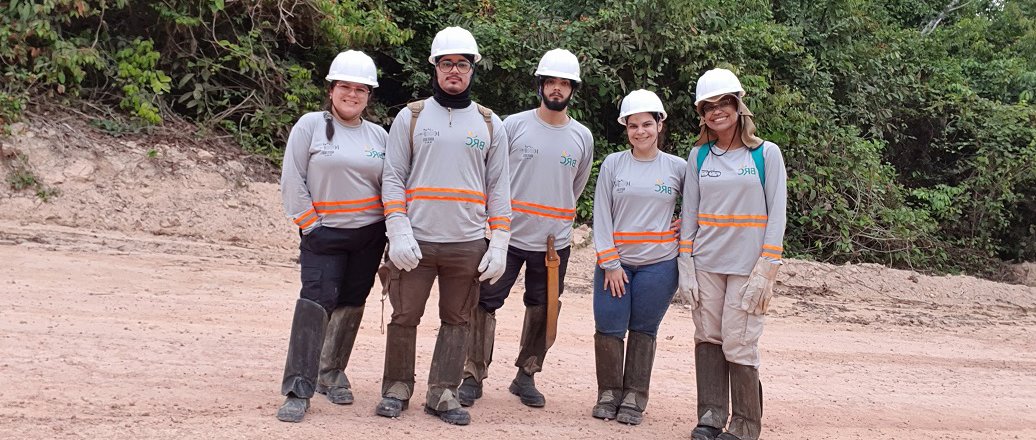A recent and effective technology in the area of biological inventories, biodiversity mapping through Environmental DNA (also known as e-DNA) has already arrived in Pará through the Brazil-Norway Biodiversity Research Consortium (BRC), in a survey carried out in the municipality of Paragominas.
Led by Professor Jonathan Ready, the team has been carrying out campaigns to collect soil, water and sediment samples in the municipality of Paragominas, but specifically in the region of Hydro's bauxite mine, which has existed for 15 years. The company conducts rehabilitation of mined areas using traditional planting, natural regeneration and nucleation methods.
Since 2009, more than 2,600 hectares have been reforested in the mine region. In 2021, a total of around 290 hectares were rehabilitated by Hydro Paragominas. The species used in the recovery of the areas are referenced in the inventory made by the company, before the extraction of the ore, with approximately 50 species adaptable to the reality of the region. Among the species, ipê amarelo, maçaranduba, jatobá, copaíba, ingá-de-macaco, sucuuba, paricá, fava acorn have already been planted.
Samples of plants and insects are also collected by the project teams to assess the development of these species according to the seasonality of the local fauna and flora. The current research group of the BRC's Environmental DNA project has more than 30 students of different levels who are constantly integrating the teams that go to the field. According to Jonathan Ready, it is a large-scale project: “We have recovered plots with different ages and the company has a record of each area, which will allow us to monitor a few years of recovery and observe our samples to see which ones present significant differences. In the national context, I believe I have never seen a project so integrated in terms of responses that we may have to recover areas that have undergone vegetation suppression.”
Research in the aquatic environment
The e-DNA allows the characterization and monitoring of species composition in environments that are difficult to collect, such as rivers, seas and bays. For this reason, the research is also collecting samples from the region's creeks: water, sediments, plankton, stomach contents of fish, among others. “The aquatic issue summarizes everything that happens in the basin above, the fruits that fall into the water are a source of food for the fish, for example. So the water environment reflects for us the impacts of land use such as vegetation suppression, reforestation, silting, etc", comments biologist Silvia Britto, a member of the team with a PhD in Animal Diversity (Zoology) and a Master's degree in Genetics, Biodiversity and Conservation.
The collected samples are currently undergoing genetic sequencing, part of them even in laboratories in Norway with students who are doing exchange programs in the country. “This is an excellent opportunity that the BRC offers students: this internationalization. The partnership is wonderful for this, the knowledge and interaction has been great. I am happy that we were able to assemble a team with representativeness, diversity, and experiences at the most diverse levels: master's, doctoral and postdoctoral. Residents of the region with the experience of the Amazon and people from outside as well”, concludes Jonathan Ready.
About the BRC
The Brazil-Norway Biodiversity Research Consortium (BRC) is formed by the University of Oslo, Norway, and its Brazilian partners, Museu Paraense Emílio Goeldi, UFPA and Universidade Federal Rural da Amazônia (UFRA), in addition to Hydro. Established in 2013, it was renewed for another five years in 2017.
The consortium maintains a research program connected to Hydro's mining operations. The objective is to invest in research to strengthen conservation strategies for the Amazonian fauna and flora, in addition to generating information that supports the improvement of forest recovery processes in the areas mined for bauxite in Paragominas.
The BRC already has 26 projects approved and in progress, engaging around 220 researchers from different academic levels and specialists from different biological groups. The partnership generated dozens of scientific products (articles, papers, master's dissertations, among others), has already resulted in the discovery of 3 new species of fungi, 1 new species of wasp and 1 new species of bedbug, in addition to 2 national awards (ABAL and ABOUT ) and 1 international (ICSOBA).
: January 6, 2023







